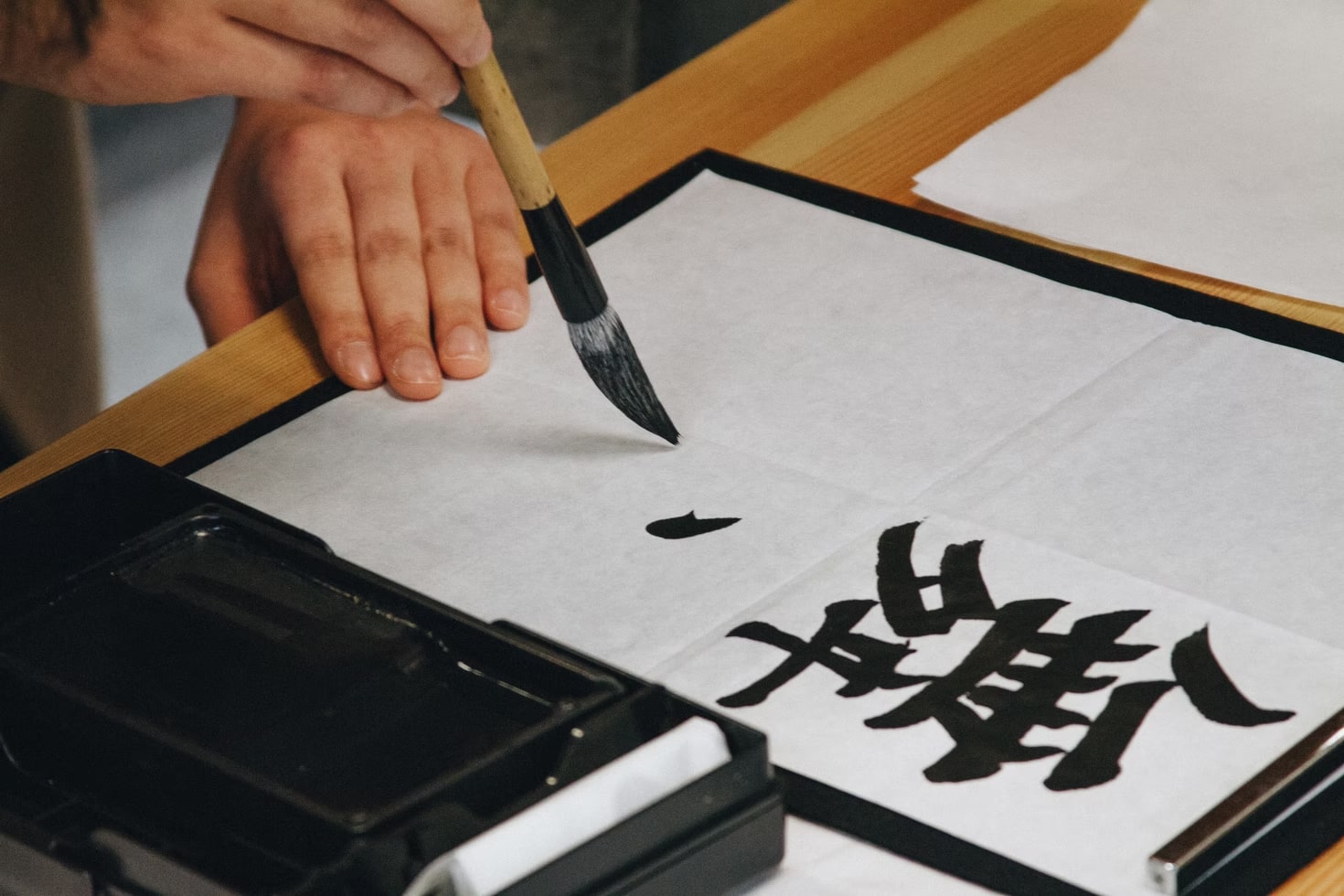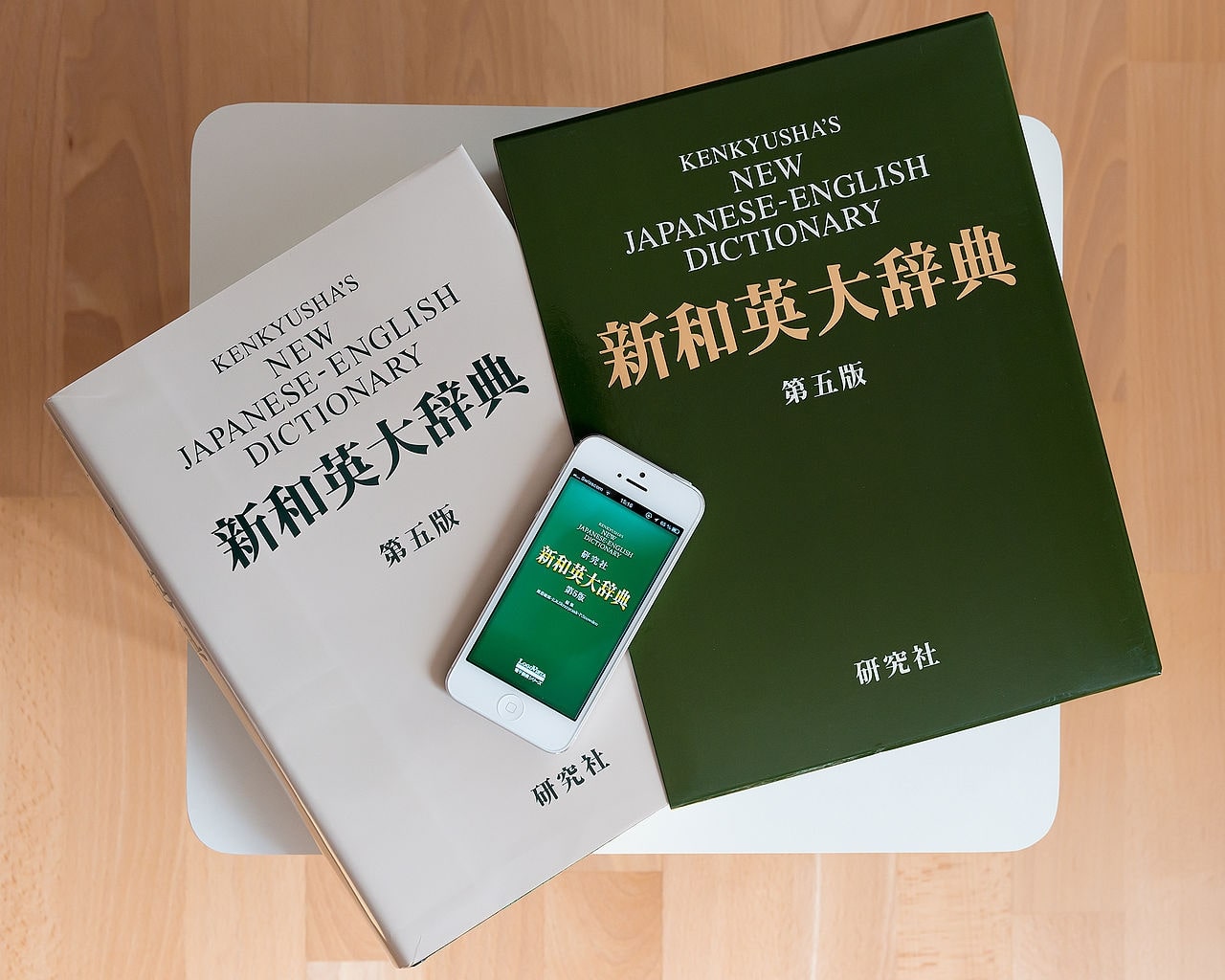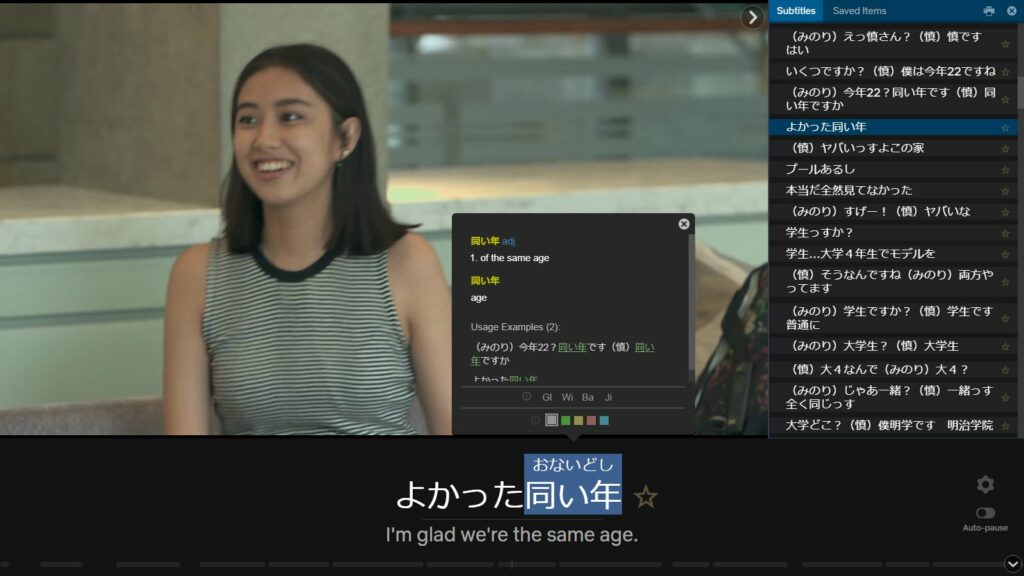Japanese language study tips
There’s no way to sugarcoat it – picking up a new language is a long and arduous journey. But with a few tips and tricks, coupled with hard work, anyone can go from a beginner to a seasoned language speaker. Follow these tried-and-tested Japanese language study tips, including free resources and useful apps to get, to embark on your language learning journey.
For more language-related article, check out:
Beginner
1. Lay a solid foundation with the 3 Japanese scripts

Image credit: Wikimedia Commons
One of the first things beginners should have down pat is memorising the phonetic scripts, hiragana and katakana. There’s no shortcut – you have to commit the “letters” to memory as the scripts are used as syllables for pronunciation.
If you’re having trouble memorising, recite iroha, an old Japanese poem that contains every hiragana character except for ん (n). Using children’s songs – or even your favourite Japanese song – and transforming the lyrics into hiragana or katakana can help you get used to the enunciation.
Besides being great resources for writing practices, trace sheets can also help familiarise you with the direction and order of strokes.
Avoid relying on romaji. Instead, force yourself to write, read, and breathe everything in the phonetic script.

Image credit: Niketh Vellanki
With over 50,000 existing kanji, the thought of memorising every single one can send a shudder down one’s spine. But not to worry – only ~2,000 characters are jōyō kanji (常用漢字), which refers to commonly used kanji that everyone is familiar with.
Based on the Japanese-Language Proficiency Test (JLPT), a certified standardised test for Japanese language ability, beginners only need to master around 250 kanji to pass the easiest levels, N4 and N5. Flashcards or apps such as Anki are handy tools to make memorising more efficient.
2. Use a textbook for structured learning

Image credit: Hiroshi Tsubono
Whether you’re self-studying by watching anime or having lessons in class, having a textbook is essential to a solid language foundation. Besides providing a structured approach to your learning, textbooks also cover basic Japanese grammar with detailed explanations, and include useful practice questions and essential vocabulary.
Textbooks such as Minna no Nihongo and Genki are great introductory resources that are typically used in a classroom setting. For self-learners, Tae Kim’s Japanese Grammar Guide is a free online resource that goes in-depth on the technical aspects of grammar.
3. Get a good English-Japanese dictionary

Image credit: Niko Kitsakis
This goes without saying, but a good Japanese-English dictionary is your new best friend.
It may be tempting to gravitate towards Google Translate whenever you need to search up a word. But convenient as it may be, the service isn’t actually the most accurate when it comes to translation, ironically.
For an accurate and user-friendly online Japanese dictionary, the comprehensive Jisho.org is your go-to.
Free and reliable, the dictionary app Shirabe Jisho comes with a handwriting function, which lets you look up new kanji characters even if you don’t know their pronunciation.
The app even allows you to bookmark words and categorise them into different folders – a great feature for revision when words slip your mind.
4. Passively listen to get used to the language

Image credit: Bohdan Maylove
Passive exposure alone will never get you to native-level fluency. But it can certainly get you familiarised with language nuances, especially sounds, sentence structures, grammar, and or even the latest slangs.
Exposure can come from anywhere. Whether it’s an anime or a Japanese drama series, the time spent on listening to dialogues in your downtime can be a great supplement to your active learning over time. Learning a new language is all about accumulative effort, and any form of learning will prove to be beneficial in the long run.
5. Read Japanese on a daily basis
 Image credit: NHK
Image credit: NHK
Reading extensively is essential for learning grammar, sentence structure, and acquiring new vocabulary.
Made for children and Japanese language learners, NHK’s News Web Easy is a fantastic resource that uploads four simplified news articles per day with audio, furigana (small kana characters that are printed above kanji), and a link to the original article.
Novice language learners should commit to reading at least one article a day. The website includes definitions for more difficult words – just hover your mouse over the underlined words and their meaning should pop up instantly. You can also note down any unfamiliar words for future reference.
Once you get the gist of the article, practise reading the article out loud by following the audio clip. The articles are narrated by NHK announcers, which means that their pronunciation and intonation are regarded as “perfect” by textbook standards.
 Image credit: @JapaneseQuest
Image credit: @JapaneseQuest
If reading four articles daily is no sweat for you, we recommend downloading Language Learning With Netflix. It’s a chrome plugin for the streaming site that displays both Japanese and English subs at once. Similar to NHK’s News Web Easy, the extension even has a hover dictionary that allows you to access word definitions midshow.
6. Maintain a consistent study schedule

Image credit: Renáta-Adrienn
Any seasoned language learner will preach the same thing: spend less time worrying about how to study perfectly and more time actually studying.
The key to fluency is accumulative studying. Rather than cramming everything in one sitting, spread it out to 25 to 30 minutes a day. A routine will help you get into the habit of reading and listening to Japanese regularly.

Image credit: Glenn Carstens-Peters
In the long run, incorporating new words into your vernacular will come naturally since you see them consistently day after day.
Studying in short periods at a time also means that you can utilise your down time in your busy schedule to look up the meaning of a word, or learn a new grammar rule, instead of having to allocate chunks of time for it.
Intermediate and above
1. Consume native materials extensively
 Image credit: Gen Hoshino
Image credit: Gen Hoshino
At some point past the beginner stage, you may find yourself hitting a plateau as things become more advanced and harder to absorb.
Discouraged by the lack of progress, you may find that the excitement that comes with learning a new language may fizzle out, and you end up feeling unmotivated to pick up your textbooks.
While it might sound counter-intuitive, one way to get around this is to simply stop studying Japanese for the sake of studying. Instead, learn the language naturally by consuming native materials you’re actually interested in.
Read Japanese novels by your favourite author for leisure, newspaper articles about current affairs you’re passionate about, or even sing along to the latest songs in Japanese – anything that piques your interest. Consume them regularly, and without even noticing, you’ll eventually get better and be well on your way to native fluency.
 Image credit: Shot by Cerqueira
Image credit: Shot by Cerqueira
By now, you’d have mastered the basics, and it’s easier to pick up on accents and intonations that you may have otherwise missed out during beginner stages. To truly achieve native-level proficiency, oral communication plays a huge part.
Shadowing is a great technique encouraged by Japanese teachers to develop a natural accent. Take any audio clip, preferably textbook materials or a news broadcast, and repeat out loud everything that the speaker says.
Take care to imitate the pitch accent and intonation used. With regular practice, you’ll get used to the language pattern and sound more natural.
2. Working on your pitch accent

Image credit: Spy x Family Operation Podcast
Besides materials that use “standard Japanese”, consider venturing into podcasts, radio, and variety shows that provide a treasure trove of casual Japanese spoken in daily life.
Compared to news broadcasts, the atmosphere here tends to be more relaxed. You’d be able to easily pick up the latest slang and linguistic quirks that are otherwise not taught in standardised textbooks.
In particular, we recommend podcasts and radio shows hosted by seiyū (声優; voice actors). Due to the nature of their profession, the hosts typically enunciate their words clearly without sounding too textbook-like.
Anime podcasts such as the Spy x Family podcast or Jujutalk, a podcast for Jujutsu Kaisen, are hosted by the voice cast and uploaded onto Spotify weekly.
Alternatively, you can also find radio talk shows that are available on YouTube.
3. Practise, practise, and practise

Image credit: S. Tsuchiya
The final hurdle in your journey to becoming fluent is to practise speaking the language as much as possible. It’s normal to feel nervous or embarrassed about making silly mistakes. However, the only way to get used to it is to just do it.
One easy way to get over this hurdle is to find a language exchange partner through apps such as HelloTalk or Tandem. This way, you can slowly get used to speaking in and listening to Japanese, knowing that everyone is there to learn, and that it’s normal to make mistakes.
Basic Japanese language study tips
Learning a new language takes a lot of time and patience. But with these hacks and tips, your road to native fluency is certainly an attainable goal. Even if you’ve achieved mastery in Japanese, language learning is a lifelong journey, so keep practising and speaking!
For more Japanese language-related articles, check out:
- Common speech habits in anime to avoid
- Japanese slang to know
- Buzzwords that defined the year 2020 in Japan
- Untranslatable Japanese words
- Games to help you master basic Japanese
This article was updated on 17th May 2022 by Xiu Ting Wong.
Cover image adapted from (clockwise from left): Spy x Family Operation Podcast, @JapaneseQuest and Eepeng Cheong

Drop us your email so you won't miss the latest news.






